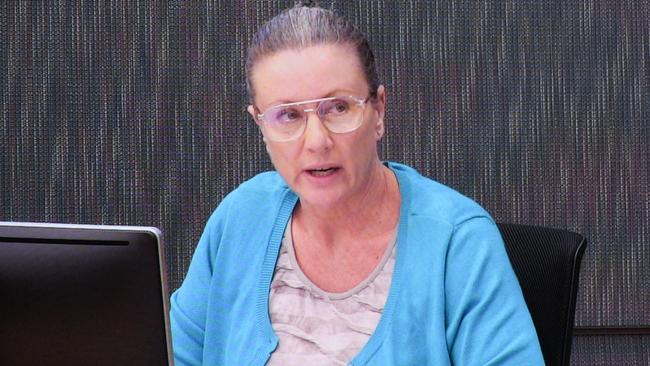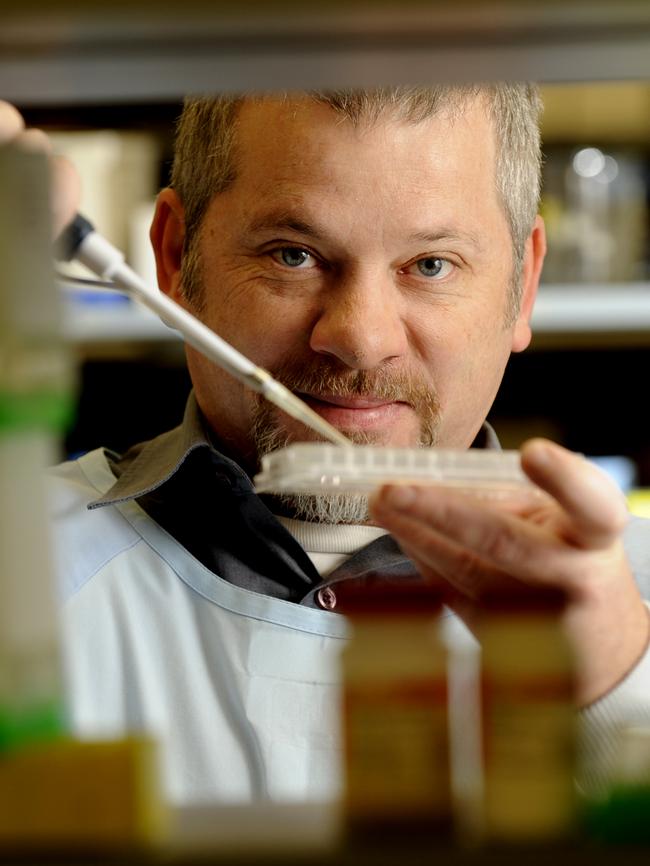Behind the research that convinced scientists to plead for Kathleen Folbigg’s release in petition
Ninety scientists have backed a petition for Kathleen Folbigg’s release. Popular science magazine Cosmos unpacks the research that convinced them.
Science
Don't miss out on the headlines from Science. Followed categories will be added to My News.
A group of eminent Australian and international experts has petitioned the NSW Governor to pardon serial child killer Kathleen Folbigg.
The petition, whose signatories include Nobel Laureates Elizabeth Blackburn and Peter Doherty, cites new genetic evidence suggesting Folbigg’s four children, whom she was convicted of killing in 2003, may have died from natural causes.
It comes as Folbigg awaits the judgment of a NSW Supreme Court appeal, which she launched to quash the findings of a 2019 judicial inquiry that affirmed her guilt.
So what, precisely, is the scientific argument put forward in the petition?
Among evidence considered by the 2019 inquiry were “molecular autopsies” on the two female Folbigg children – one of whom died at 10 months and the other at 18 months – which found they had genetic mutations that predispose to sudden cardiac death, reports cosmosmagazine.
Despite those findings the inquiry did not exonerate Folbigg. On the contrary, the Commissioner, the Honourable Reginald Blanch AM, QC, concluded the evidence “makes her guilt of these offences even more certain”.



That finding is contested in the current petition which says the inquiry lacked access to critical data. While the two children were found to have genetic mutations there was no “functional validation” or hard data at the time to show the variants were likely to have caused a fatal heart event.
That data is, according to the petitioners, now to hand.
An international study requested by the 2019 inquiry, led by Peter Schwartz from the Centre for Cardiac Arrhythmias of Genetic Origin in Milan, Italy, published in November 2020, found a genetic variant known as CALM2 G114R had “likely precipitated the natural deaths of the two female children”.
What does this mutation do and how might it have caused the death of two of the Folbigg children?
CALM2 G114R is a variation in the gene CALM2 that codes for a protein called calmodulin (read the genetics explainer) which, in turn, regulates the movement of calcium in heart muscle cells. Calcium is critical to something called excitation-contraction coupling in the heart.
Each of your 70 or so heartbeats per minute starts in a kernel of cells at the top of the heart called the sino-atrial (SA) node. The SA node has a property called “automaticity”, which means it can generate an electrical spark, called an action potential, all by itself.
The spark spreads down to another staging post called the atrioventricular node before triggering a succession of contractions in the heart muscle cells or “myocytes”. It all happens like a Mexican wave and the end result is that your heart squeezes blood into the big arteries that feed the rest of the body.
So where does calcium come in? Each myocyte must have its own action potential triggered in a co-ordinated way, something caused by changes in electrical charge across the cell wall known as “depolarisation”. Those finely tuned shifts in charge are triggered by ion channels that open and close to admit and release sodium, potassium and all-important calcium ions in quick succession.
If there is a hiccup in the flux of any of those ions, co-ordination is lost and your Mexican wave gets interrupted. Depending on which ion is the culprit, a hierarchy of effects happen, some of them lethal changes to the heart’s rhythm. Which is where calcium has a big say.
Calmodulin closes the ion channels through which calcium flits in and out of the heart muscle cells. But if you have the CALM2 G114R variant, calmodulin gets bad at closing the channel – it stays open and calcium can come and go as it pleases. The result? That nice link between “excitation” from the SA node and “contraction” of the heart muscles is lost.
So what happens to people with this variant? Schwartz assembled an earlier team to find out. The researchers looked at 74 people with mutations in the suite of calmodulin genes known as CALM1, CALM2 and CALM3, conditions known as calmodulinopathies. Their report, published in the European Heart Journal in 2019, makes disturbing reading.
Twenty-seven per cent of people with a calmodulinopathy had a sudden cardiac death. Their average age was just shy of six years. The genetic variants were linked to irregular heartbeats called ventricular fibrillation, which are typically fatal, and to a condition called Long QT Syndrome, which shows up on the resting heart trace or “ECG” and can cause chaotic, lethal heart beats.
But one arrhythmia in particular stood out.
“Catecholaminergic polymorphic ventricular tachycardia” (CPVT) is a very rapid beating of the bottom chambers of the heart, triggered by a rise in “catecholamine” hormones such as adrenaline, often from exercise or intense emotion. In the latest study Schwartz’s team had this arrhythmia squarely in their sights.
First, they did gene sequencing on samples from all four children and Kathleen Folbigg herself. They found the CALM2 G114R variant was present in the mother and the two female children – Sarah and Laura, referred to as Child 3 and Child 4 in the study. Then they did a series of lab experiments. These showed CALM2 G114R interfered with the ability of calmodulin to regulate two pivotal calcium channels. The finding led the authors to a crucial conclusion. The variant, they write, makes carriers “prone to cardiac arrhythmias … which could cause cardiac arrest during sleep”.
But two further aspects of the girl’s deaths were also telling. Four days before her death, Sarah (Child 3) was diagnosed with a croupy cough and put on antibiotics by the GP. “Serious infections might have caused an elevated catecholamine state,” the authors state, plausibly triggering an arrhythmia such as CPVT.
Laura (Child 4) also had a respiratory infection two days before she died, which was treated with a medicine that contains pseudoephedrine, an adrenaline-like drug. In addition she had myocarditis, an inflammation of the heart, at autopsy. “Combinations of these factors may have triggered the lethal events,” the authors write.
Of course, none of these explanations are relevant to the two male children (Child 1 and Child 2 in the paper), who lacked the CALM2 G114R variant. The new 2020 study did, however, find both boys had a rare genetic mutation linked to lethal epilepsy in mice.
In sum, the studies provide evidence for the “functional validation” missing at the 2019 inquiry, potentially linking the genetic variant with fatal arrhythmias in the Folbigg girls.
Reprinted with permission from cosmosmagazine.com, published by The Royal Institution of Australia
More Coverage
Originally published as Behind the research that convinced scientists to plead for Kathleen Folbigg’s release in petition




